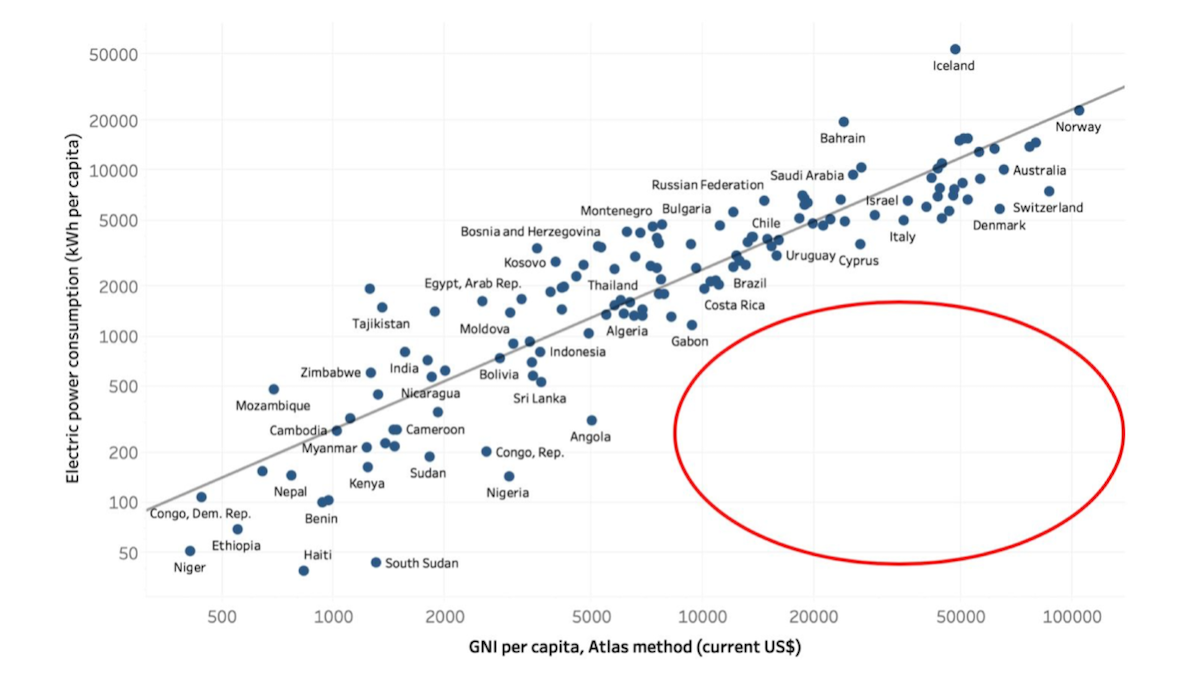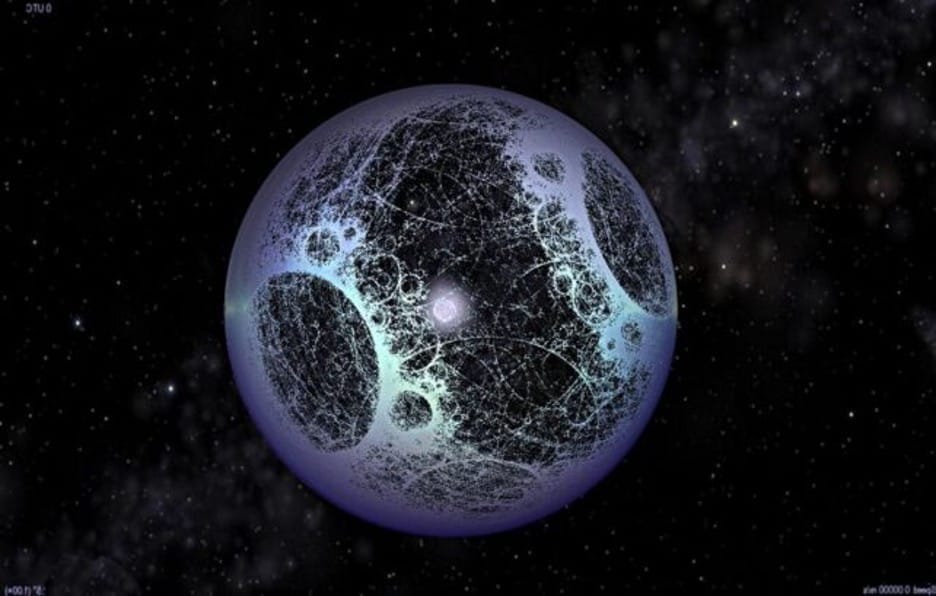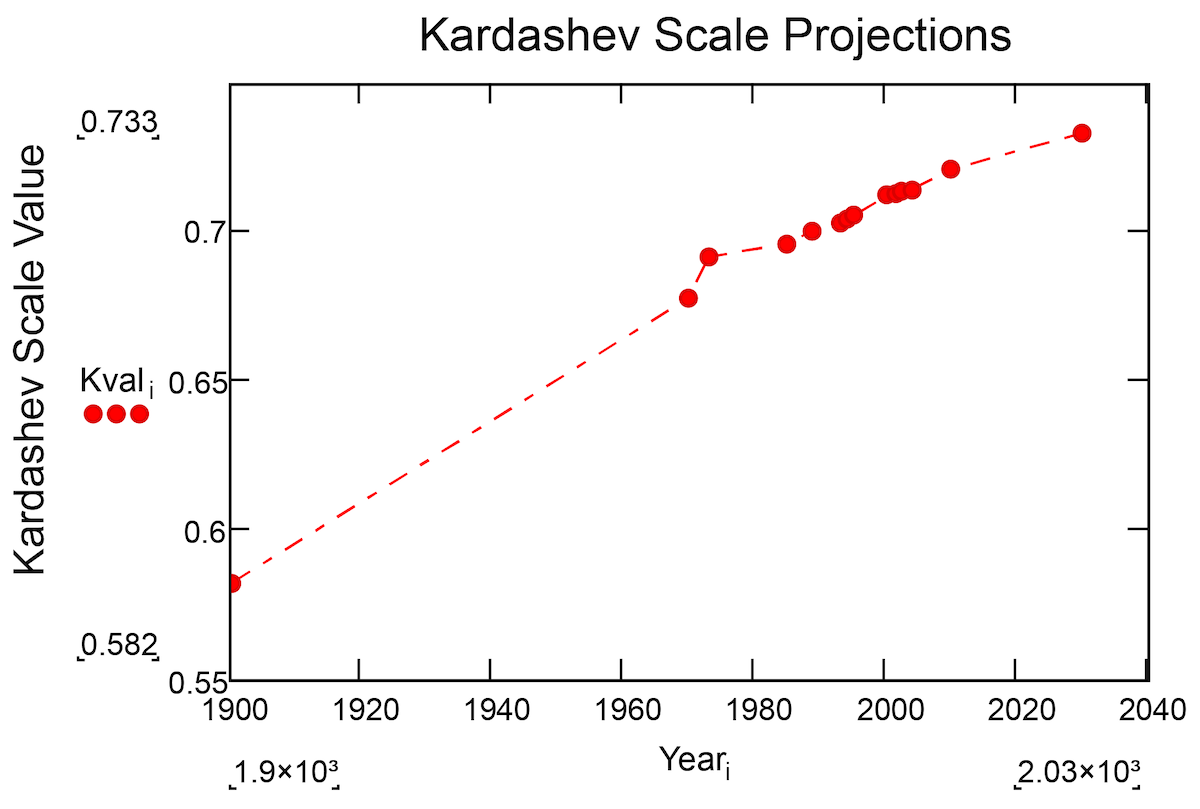
At a small scientific conference in Armenia in 1964, a young astrophysicist — Nikolai Kardashev — presented an incredibly forward-looking paper.
It was titled Transmission of Information by Extraterrestrial Civilizations.
In that paper, Kardashev defined a broad classification for the stages of advanced civilizations and their growth.
The above became known as the Kardashev scale, a grand perspective of giant leaps between stages of civilization — from the perspective of energy capture and consumption.
It might seem like an odd thing to be thinking about in 1964, so far at the outer limits of what is possible, even for civilization today — 60 years later.
And yet, it was deeply rooted in a basic truth about the evolution of any civilization.
That basic truth is this: Increasing levels of energy consumption are necessary for a civilization to advance.
The chart below is a clear representation of that premise on planet Earth, on a country-by-country basis.
Gross National Income per Capita vs. Electricity Consumption

The above chart demonstrates the direct correlation between the increase in income at a national level… and the increase in energy consumption.
And aside from the obvious correlation between the two, the most striking thing about the chart is that there are no countries in the lower right corner (where the red circle is).
Said another way, there isn’t a single country that was able to increase its gross national income without a dramatic increase in energy consumption.
For most of us, this will likely be common sense. Countries that have access to cheap and widely available energy sources will be more productive than those that don’t. Energy impacts everything from food production, transportation, manufacturing, commerce, healthcare, education, and of course, quality of life and human longevity.
However for those decels out there who wish to decelerate economic growth, this chart will be an uncomfortable truth.
As interesting as these observations are, they weren’t the main point of developing the Kardashev scale. After all, Kardashev was an astrophysicist, not an economist.
If we think back to the ’60s, the U.S. and Russia were in an all-out space race. And it wasn’t just about getting into orbit or landing on the moon. There was deep fascination about extraterrestrial life, whether or not it existed, and of course how to find it.
And this is where the Kardashev scale comes in handy. Given the incredible distance between Earth and other solar systems measured in light years, it is nearly impossible to determine the existence of an advanced civilization.
Finding exoplanets is something that we’ve gotten good at. We’ve already found more than 5,000. Scientists have also been able to determine which exoplanets have the right characteristics to harbor life, at least as we understand it.
But outside of receiving a direct radio communication from an advanced civilization, it’s nearly impossible to know if any civilization is there.
This was the purpose of Kardashev’s scale.
A Type II civilization would be capable of directly harnessing the energy of the star that it orbits. In order to do that, it would need some kind of advanced technology to surround the star in order to capture, store, and consume that energy.
And that would be detectable from a long distance.
Which is why some recent research caught my eye.
Two teams of researchers based in Sweden and Italy analyzed 5 million stars in the Milky Way galaxy.
They analyzed data from the European Space Agency’s Gaia project, which is mapping out the most accurate 3D map of our galaxy, combined with infrared data from both ground and space telescopes for those same 5 million stars.
The results are exciting.
The combined teams found as many as 60 stars that are emitting strange signals and readings… readings that cannot be explained by any natural reasons.
How is this possible?
Well, one of the technologies envisioned to be in use by a Type II civilization is a Dyson sphere.
The most extreme example of which would encompass a star, at a massive distance, facilitating the harnessing of the star’s energy.

A more likely scenario would be a constellation of massive satellites surrounding a star, sometimes referred to as a Dyson swarm, or Dyson rings.

And Kardashev’s point, the key point, is that these mega-structures built by advanced civilizations would give off unique signatures that could be “seen” from light years away.
One of the two teams found seven red dwarfs (small, low luminosity fusing star) emitting odd infrared signals within 900 light years from Earth. The stars were up to 60 times brighter in infrared than expected. This is something that could be explained by the presence of a Dyson sphere.
Of course, in the absence of a warp drive — a fictional propulsion mechanism for helping a spacecraft travel faster than the speed of light — these stars are too far away for us to ever make contact. But the stars discovered in the research will be an intense area of study.
Some of us might be wondering… Where does that leave us? The human civilization?
Well, we have our own Kardashev rating. And it’s clear we have quite a bit of work to do.

The human civilization hasn’t yet hit a Type I classification. We’re sitting around a 0.72, with what appears to be a long road towards 1 — certainly not within our lifetimes.
But that’s not the mindset of an E/ACC — an optimist who knows that, with technology, hard work and ingenuity, humanity-scale challenges can be solved.
And there is no better correlation between bringing the world’s population out of poverty than an increase in cheap, widely available energy.
And we won’t need a Dyson sphere to accomplish that.
In fact, we can still capture the “power of the sun” using nuclear fusion technology, which mimics the same reactions that take place in a star to produce limitless clean energy.
And while we’re at it, hopefully we’ll confirm the existence of a few advanced civilizations along the way.
We always welcome your feedback. We read every email and address the most common comments and questions in the Friday AMA. Please write to us here.